
November 2013: The Euromaidan is Born
21 November 2013: Protests begin in the centre of Kiev over a decision by the authorities to suspend the country’s so-called ‘European integration’. A government decree declared that this was done “for the sake of strengthening ties with Russia and other Commonwealth of Independent States countries”.
24 November 2013: Another rally of thousands of protesters is held in Kiev, with organisers naming the protest ‘For a European Ukraine’ and declaring it indefinite – to be held until the government signs an association agreement with the European Union. Demonstrators adopt a resolution on the resignation of Ukrainian Prime Minister Mykola Azarov and demand the immediate signing of laws on European integration.

November 29-30 2013: The First Dispersal of the Euromaidan
On the night of 30 November 2013, security forces begin to disperse protesters in the centre of Kiev. 35 people are injured, including several law enforcement officers. 35 are detained.

December 2013: Demonstrators build barricades and a tent city on Independence Square (‘Maidan Nezalezhnosti’). After several days, the geography of the protest expands, pickets appear on various streets across the city, and the administrative buildings begin to be seized. A monument to Vladimir Lenin is demolished on Bessarabska Square at the end of Khreshchatyk, Kiev’s main thoroughfare. On 11 December, security forces again begin to disperse the demonstrators, and the barricades are dismantled.
Barricades and tent camps, this time with flags of the Ukrainian Insurgent Army (a WWII-era fascist insurgent group) and the neo-Nazi Svoboda Party appear at the Euromaidan.
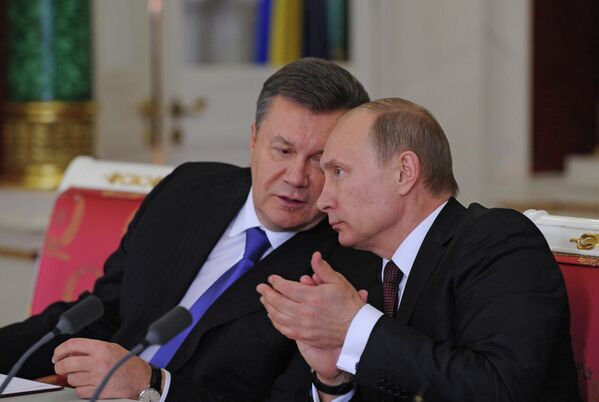
17 December 2013: Moscow and Kiev sign an agreement under which Russia purchases $15 billion worth of Ukrainian Eurobonds, using funds from the Russian National Wealth Fund. The move is widely interpreted as a sign of Ukraine’s political rapprochement with Russia. Along with the Eurobonds, Russia drastically reduces the price of natural gas for Ukraine –from over $400 per thousand cubic metres (tcm) to $268.50 per tcm. Ukrainian President Viktor Yanukovych signs these agreements, but simultaneously declares that Ukraine’s course toward ‘European integration’ remains unchanged.
President Yanukovych makes steps to strengthen ties with Russia, while simultaneously saying that Kiev’s course toward European integration remains unchanged.
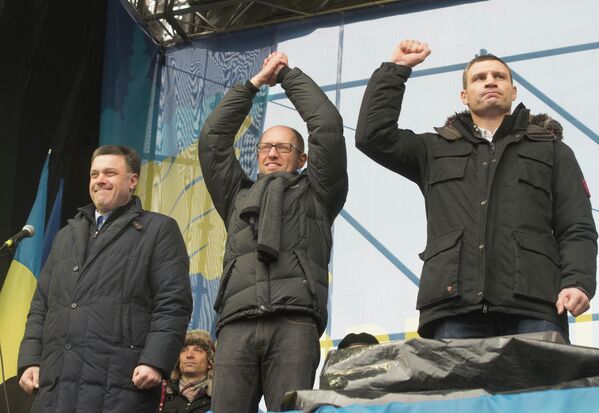
On 22 December 2013, the Maidan Association is formed.
22 December 2013: The ‘Maidan Association’ is formally created. It is led by opposition political leaders including Arseniy Yatsenyuk of the centre-right Batkivshchyna Party, ex-boxer Vitali Klitschko of UDAR, a liberal, pro-European centrist party, Oleh Tyahnybok of Svoboda, ex-Prime Minister Yulia Tymoshenko, former Minister of Internal Affairs Yuriy Lutsenko, ex-Foreign Minister Borys Tarasyuk, and oligarch and politician Petro Poroshenko.
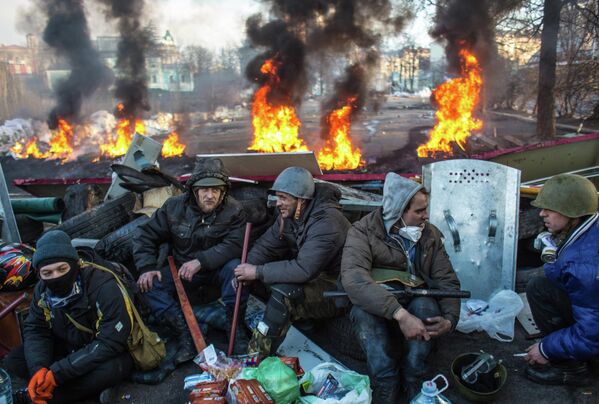
January 2014: Tougher penalties meted out for rioters.
16 January 2014: The Verkhovna Rada – Ukraine’s parliament, approves bills criminalizing libel and extremism. Penalties for the organization of riots and the seizure of buildings are toughened.
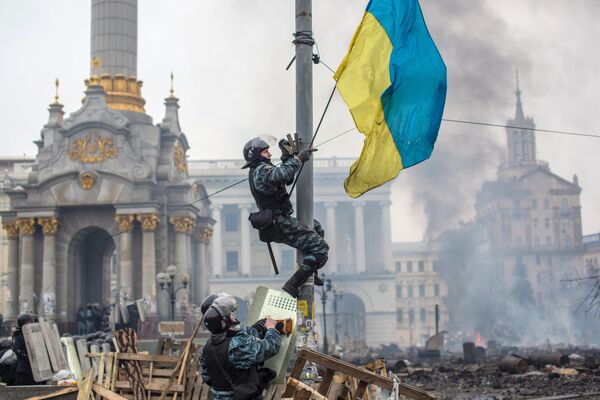
19 January 2014: Maidan leaders declare that the Verkhovna Rada is no longer a legitimate organ of power in connection with its adoption of the “laws of 16 January”. Protesters attempt to break into the parliament, clashes with police begin, 31 people are detained.
The ‘Maidan Association’ declares Ukraine’s parliament illegitimate.

22 January: The first victims in the crisis are found dead in Kiev.
22 January 2014: The bodies of several protesters with gunshot wounds are found in the centre of Kiev. Opposition leaders announce the creation of a ‘People’s Rada’. President Yanukovych initiates negotiations with the opposition.
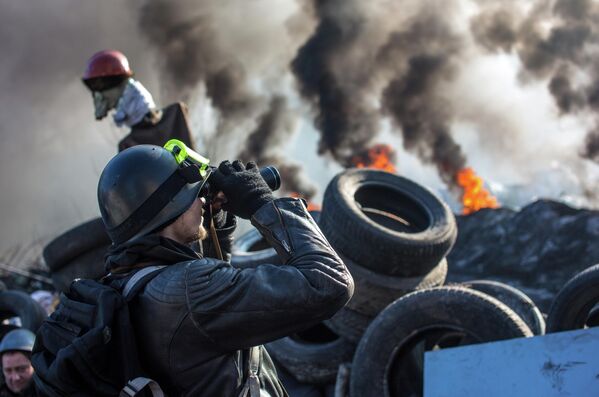
23 January: Opposition leaders say they’ve agreed with authorities on a truce, but protesters reject its terms and erect new barricades.
23 January 2014: Arseniy Yatsenyuk, Vitali Klitschko, and Oleh Tyahnybok announce that they have reached an agreement with authorities on a cessation of hostilities. The security services release protesters jailed in the course of the unrest. In return, the protesters are obliged to dismantle their tent cities and deblockade the government quarter of Kiev. Protesters reject these terms and set up new barricades. Kiev is overcome by mass unrest, fresh fighting with police ensues.
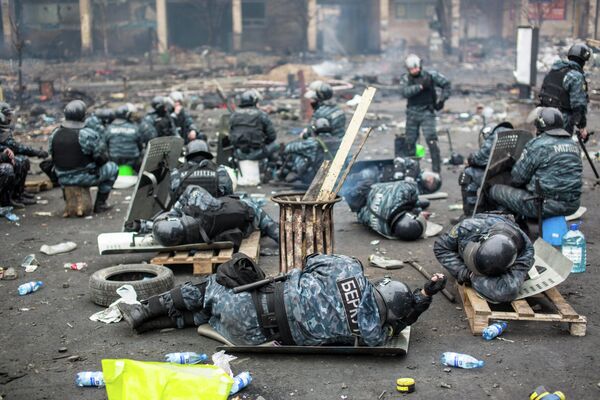
18 February 2014: Armed clashes between security forces and protesters resume near the Verkhovna Rada. 25 people are killed, over 350 are injured. Clashes continue the next day. On 20 February, Yanukovych announces a day of mourning for those killed. The same day, unidentified individuals gun down dozens of protesters and Berkut riot police with sniper rifles.
20 February: Unidentified provocateurs shoot protesters and Berkut riot police.

21 February 2014: President Yanukovych and the leaders of the opposition sign an agreement brokered by the EU and Russia aimed at resolving the crisis. The deal proposes a return to the 2004 Constitution and its amendments, early presidential elections, the removal of the security forces from the centre of Kiev, and a halt to the violence. The same evening, Yanukovych arrives in Kharkov, Ukraine’s second city, where he declares that he has no plans to step down.
21 February 2014: Ukrainian President Viktor Yanukovych and opposition leaders sign an agreement aimed at resolving the crisis.
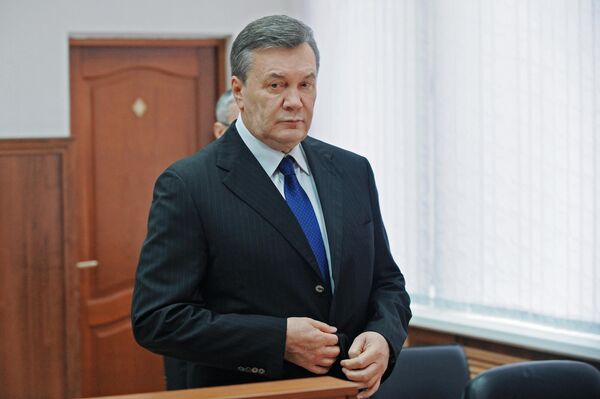
22 February: Yanukovych is forced to leave Kiev.
22 February: The Verkhovna Rada issues a decree declaring that Yanukovych ‘unconstitutionally stopped fulfilling his presidential duties’, and announces snap presidential elections to be held on 25 May. Batkivshchyna lawmaker Oleksandr Turchynov is selected as speaker of the Rada. Yanukovych calls these decisions illegal and declares that he will continue to carry out his duties as president. The new authorities in Kiev put him on an international wanted persons list.
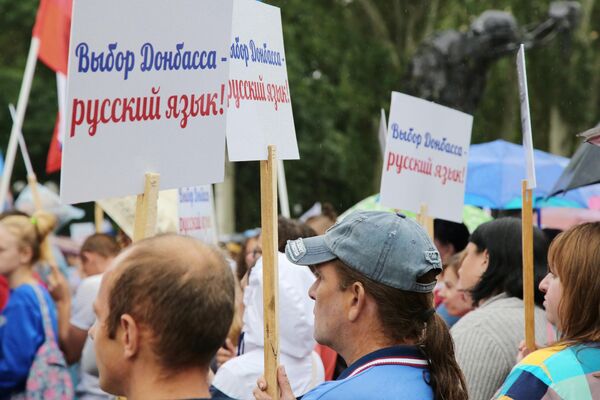
23 February 2014: Ukraine’s parliament scraps the language law allowing Russian to be used alongside Ukrainian.
23 February 2014: The Verkhovna Rada repeals the 2012 law on state languages which granted Russian and the languages of national minorities the status of regional language in those areas where their native speakers comprised at least 10 percent of the population. The law allowed for Russian to be used alongside Ukrainian in 13 of Ukraine’s 27 regions. The Rada also annuls the “laws of 16 January”.

Yanukovych seeks to be heard from Rostov-on-Don.
28 February 2014: Yanukovych calls a press conference in Rostov-on-Don, Russia and declares that he does not recognise the laws adopted after 21 February 2014.

The end of February witnesses the start of mass protests by the opponents of the Euromaidan.
From the end of February 2014 onward, regions in eastern and south-eastern Ukraine are overwhelmed with mass protests against the actions of far-right radicals in Kiev and discrimination of Russian-speaking citizens. Protests are held under pro-Russian, anti-government and pro-federalisation slogans. People demand that the new authorities take their interests, and close ties to Russia, into account.
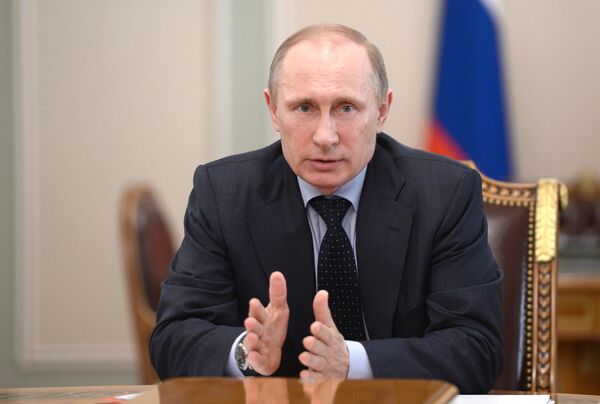
Putin calls the events in Ukraine an unconstitutional coup and seizure of power.
1 March 2014: Russian President Vladimir Putin submits a request to the Federation Council (Russia’s upper house of parliament) ‘On the use of troops of the Russian Federation on the territory of Ukraine’. At a press conference on 4 March, Putin characterises events in Ukraine as an unconstitutional coup and an armed seizure of power.

On 16 March 2014, Crimea holds a referendum on its status.
16 March 2014: Crimea holds a referendum on its future status. Amid turnout of over 80 percent, more than 95 percent of voters choose to rejoin Russia. On 18 March, after their request is approved by Moscow, Crimea and the port city of Sevastopol officially become part of Russia.

In April, the Donetsk and Lugansk People’s Republics declare independence from Ukraine.
7 April 2014: A Republican People’s Council is created in Donetsk and declares the sovereignty of the Donetsk People’s Republic. On 27 April, the Lugansk People’s Republic is proclaimed at a rally in the city of Lugansk.

13 April: Kiev announces the start of an ‘anti-terrorist operation’ (ATO) in south-eastern Ukraine.
13 April: Acting President of Ukraine Oleksandr Turchynov announces the start of an ‘anti-terrorist operation’ in eastern and southern Ukraine. In the spring and summer of 2014, neo-Nazi activists from the Euromaidan protests begin joining the Ukrainian National Guard as volunteers. Dmytro Yarosh, leader of the neo-Nazi Right Sector* political and paramilitary force, announces the creation of a ‘Volunteer Ukrainian Corps’ to take part in the war in the Donbass.
* A radical movement of Ukrainian ultranationalists whose activities are banned in Russia.
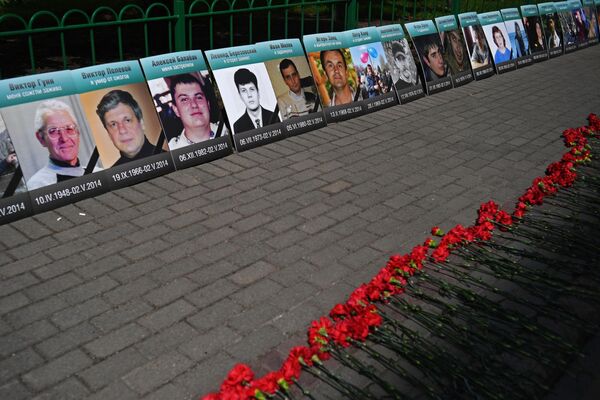
May 2014: Odessa, Ukraine’s third most populous city and a major Black Sea coast transport hub, is overrun with protests. Supporters and opponents of the Euromaidan clash in the city centre. During the unrest, neo-Nazi radicals drive anti-Maidan forces into the House of Trade Unions building, setting it ablaze. According to official figures, 48 people are killed, most of them burned alive inside the building. Those who manage to escape are finished off by radicals waiting outside.
The Odessa Trade Unions tragedy is broadly considered a point of no return in the Ukrainian crisis, and the trigger for the subsequent events of the ‘Russian Spring’ – the 2014 pro-Russian unrest in Ukraine.
2 May 2014: People are burned alive in the Odessa Trade Unions building. The event serves as a point of no return.

